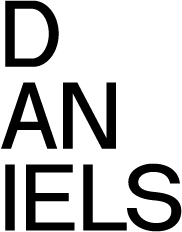Hiding in Plain Sight: The Ursula Franklin Union
ARC3015YF (L0103)
Instructor: Richard Sommer
This Studio begins with a question and a proposition:
Question: How can we renew our understanding of places that are hidden in plain sight, places so ubiquitous and commonplace as to have become almost invisible? Can we remake them in ways that build on their latent histories and potential?
Proposition:
Architecture and Urbanism today is fundamentally an art of repair and a science of renewal. In the wake of modern, consumerist models of obsolescence, cultural erasure, and the wasting of resources, this studio takes the position that architecture needs to be reinvented as an act of creative reuse, grounded in experience, history and cultural complexity.
To address this question and proposition, the studio will reimagine the former CAMH block – the large quadrant immediately southeast of One Spadina – a site we all pass by every day and see from our building, yet probably haven't considered how it could become a more engaging presence in the city. We will explore the future of this area as a kind of 21st-century centre for learning, inquiry, and community engagement: The Ursula Franklin Union. [1]
The Studio will be guided by the principle that a university is a place to foster more collective, inclusive, and ideal forms of social and intellectual life, and will serve as an opportunity to explore and envision an architecture and landscape that reflect these values.
We will look both backwards and forwards for inspiration; backwards to the origins of university architecture in radical forms of ecclesiastical cloister, and forwards to how universities are reinventing themselves to meet a more technologically deterministic and diverse, transnational society. One way to revitalize both university life and the current state of the concrete buildings on the study site is to pursue an architecture that engages all four senses: that is, one that is sensitive to light, touch, sound, and smell.
Studio Organization and Schedule
Early on, morning sessions will be dedicated to informal discussions, short field trips and the exchange of ideas among studio members, Prof. Sommer, and outside participants. Talks have been scheduled with prominent architects who have undertaken similar projects, including Nader Tehrani, Michael Maltzan, and Shirley Bloomberg. Afternoons will be reserved for reviewing work in progress. Prof. Sommer will be available for optional meetings on Fridays, as needed. There will be four phases of work, three in the first half leading to the midterm: Phase I: Brainstorming the Block (short), Phase II: Programmatic Components of the Quasi-Cloister (longer), and Phase III: Articulating the Ursula Frankin Union concept. These will conclude at the Midterm.
The second half of the term (Phase IV) will be more open-ended, with each student having the freedom to develop a key sector or building and landscape component at an architectural scale.

